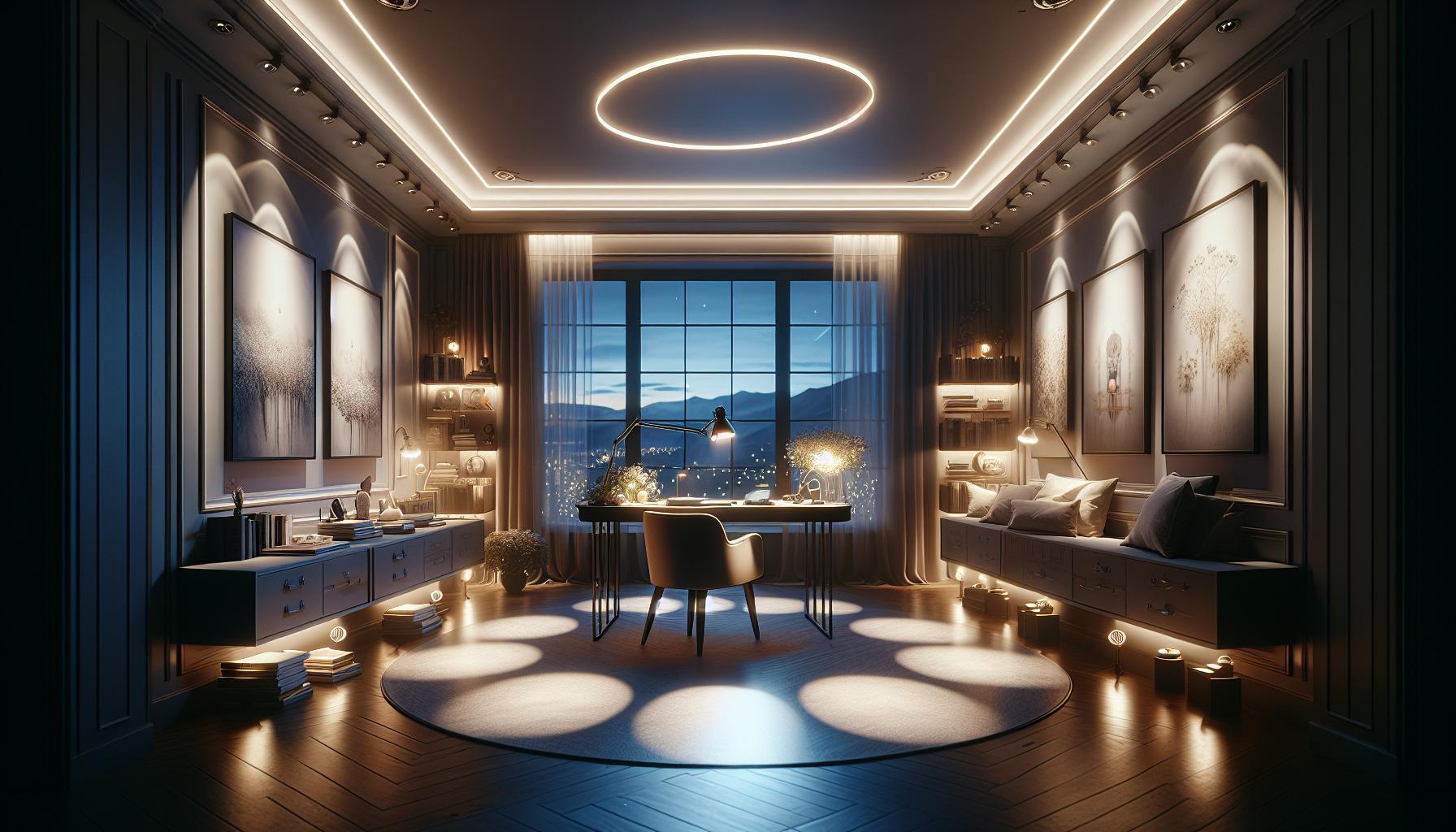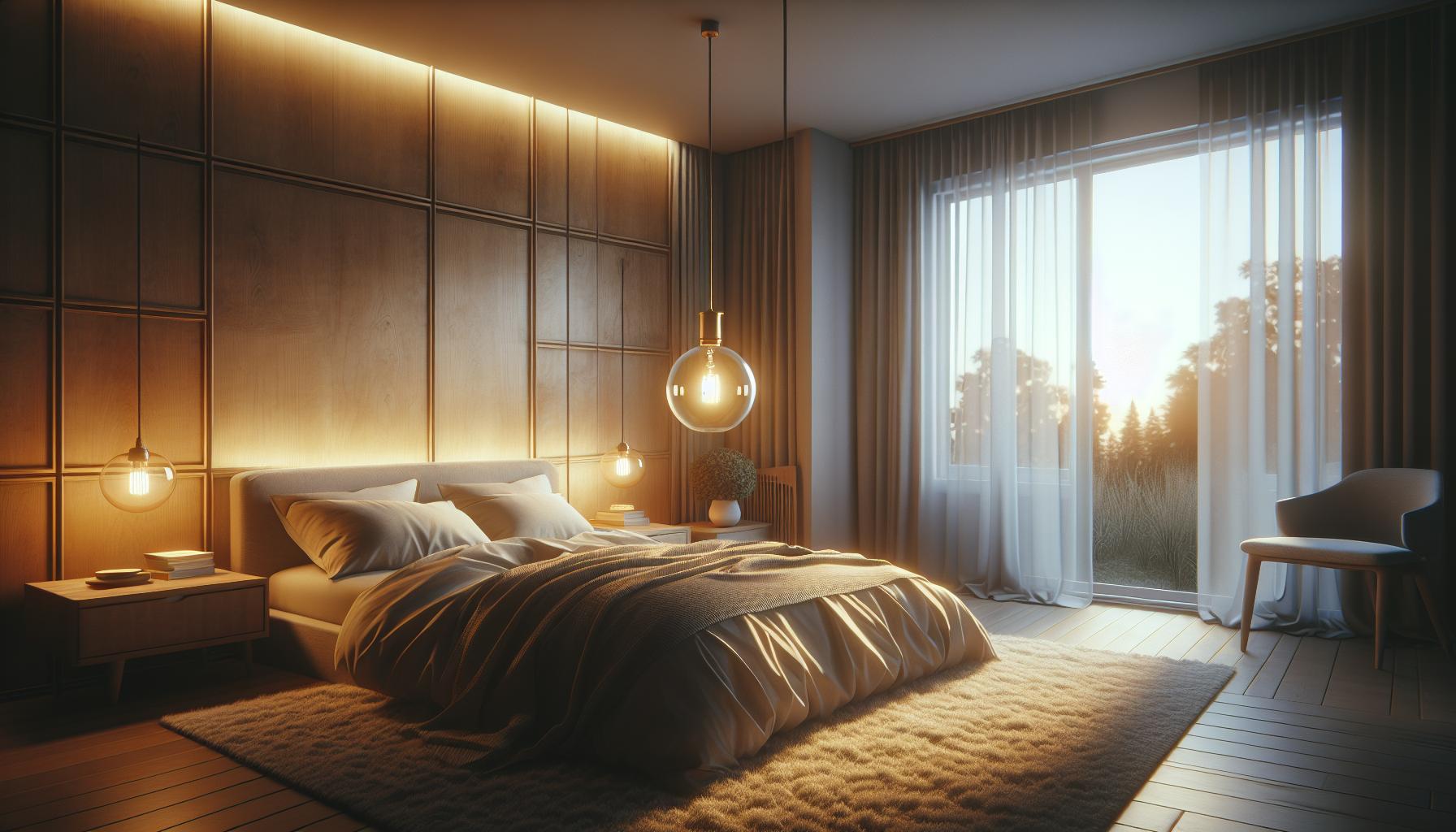Ever stopped to think about the humble light bulb? It’s one of those things you probably take for granted, but it’s hard to overstate its impact. From the moment you flick that switch in the morning, light bulbs are silently shaping your day.
They’re not just about seeing where you’re going, either. Light bulbs affect your mood, your productivity, and even your health. Let’s shed some light on why these everyday items are more significant than you might think.
The Evolution of Light Bulbs
From the initial spark of Thomas Edison’s incandescent bulb to today’s energy-efficient LEDs, light bulbs have undergone a tremendous transformation. Your understanding of this evolution is crucial to appreciating the function and importance of light within your home and workspaces.
In the late 19th century, the invention of the incandescent bulb changed everything. Its warm, steady glow was a revelation compared to the flicker of candles or the harsh glare of gas lights. Over the years, these bulbs became standard in households across the globe, lighting up rooms with a soft, inviting ambiance.
Fast forward to the late 20th century, and you’ll find the emergence of compact fluorescent lamps (CFLs). CFLs were groundbreaking, consuming a fraction of the energy used by incandescent bulbs. They offered a longer lifespan and were seen as a step toward sustainable lighting solutions. However, not everyone was thrilled with the colder light quality and the slow warm-up time.
Today’s champion of illumination, the light-emitting diode (LED), takes energy efficiency to the next level. With lifespans reaching up to 25 times longer than incandescent bulbs, LEDs are a no-brainer for your DIY home projects. They provide a range of color temperatures suitable for varied atmospheres, from a focused daylight hue in your study to a warm white in your cozy living room corner.
But it’s not just about efficiency and mood settings. Bulb development continues with smart technology integration. Imagine adjusting brightness, setting timers, and even changing colors with a simple voice command or a tap on your smartphone. This isn’t just convenience—it’s a revolution in how you interact with the light around you.
Lighting is no longer just functional; it’s integral to the design, energy consumption, and dynamism of your living spaces. Whether you’re crafting the perfect reading nook or optimizing your home office for productivity, the light bulb types you choose play a pivotal role. The bulbs of today are a far cry from their humble beginnings, embodying the intersection of design, technology, and sustainability.
The Importance of Lighting
Lighting is an essential element in any setting, profoundly affecting both the aesthetic and functionality of your environment. Its significance cannot be overstated, as it serves numerous roles from enhancing visual appeal to altering moods and even impacting health.
Imagine sitting down to a meal under the warm, gentle glow of a pendant light. Now, picture trying to prep your dinner in that same soft light. Chances are you’d be squinting at the cutting board. This is where task lighting comes in — bright, focused lights that make your cooking process easier and safer. Similarly, ambient lighting sets the overall mood of a space, offering a comfortable level of brightness without glare.
Besides functionality, lighting plays a pivotal role in interior design. Strategic placement of lights can highlight artwork, create depth, and section off areas without the need for physical barriers. Accent lighting adds drama to a room, drawing the eye to focal points. If you’re into home DIY, you’ll appreciate the transformative power a well-positioned light can have on a room’s atmosphere.
In terms of health, natural light has been shown to boost vitamin D absorption, improve mood, and regulate sleep patterns. However, not every room can bask in the sun’s rays which is where high-quality artificial lighting steps in. Modern light bulbs can mimic natural light, providing similar benefits to help stave off the winter blues or improve concentration while working.
Your light bulb choices also affect energy consumption. Switching to LED bulbs can significantly cut down on your electricity bills and carbon footprint, making a small but meaningful contribution to environmental conservation. By carefully selecting and placing your lighting, you’re not only creating a pleasant space but also being a responsible homeowner.
« Are LED Light Bulbs Bright? Discover the Perfect Glow for Your Home
Is It OK to Touch LED Light Bulbs? Find Out the Surprising Truth »
Remember, lighting isn’t just about being able to see. It’s about crafting an environment that’s comfortable, functional, and in tune with your personal tastes. Whether you’re highlighting your favorite art piece or setting the scene for a cozy evening, the lights you choose play a starring role in the daily theatre of your life.
Impact on Mood and Productivity
Imagine yourself in a dimly lit room trying to concentrate on your work. It’s tough, isn’t it? That’s because your lighting setup plays a crucial role in how you feel and perform. With the right light bulb, you can transform any space to enhance your mood and boost your productivity.
Natural light is your best friend during the day. It boosts your vitamin D, keeps you awake, and improves your mood. But when the sun goes down, it’s the artificial lights that take over. Selecting the ideal lighting for your evening tasks is paramount. You want a light that mimics the sun’s spectrum without being too harsh or too dim.
LED bulbs are a go-to choice for many of your projects. They’re not just energy-efficient; they’re also available in a range of color temperatures. Cool white bulbs, for instance, are excellent for keeping you alert and focused. On the other hand, warmer tones can create a cozy atmosphere that’s perfect when you’re looking to unwind after a long day.
It’s not just about the bulb’s color temperature, but also light intensity. Task lighting should be bright enough to prevent eye strain, especially if you’re working on detailed DIY projects where precision is key. Ambient lighting should complement this by filling the rest of the room with a gentle glow, thus maintaining a balance that’s pleasing to the eye.
Remember to adjust your lighting based on the task at hand. Dimmer switches can be a great addition to your setup, allowing you to dial in the right brightness for every scenario. Also, consider the positioning of your lamps to target light exactly where you need it.
From highlighting your latest artwork to ensuring you’ve got the perfect reading nook, lighting influences virtually all aspects of your environment. Keep experimenting with different bulbs and fixtures until you find the combination that seems tailored just for you and your activities. It’s like conducting an orchestra of light, with each bulb and lamp playing its part to perfection in the symphony of your home.
Light Bulbs and Health
You’re well aware of how light affects mood and productivity, but have you ever considered its impact on your health? It’s a lesser-known fact that the quality of light you’re exposed to can significantly influence physical and mental well-being. Exposure to natural light has been linked to improved sleep patterns and higher vitamin D levels, both of which are crucial for maintaining good health.
Moving indoors, the type of artificial lighting you choose continues to play a pivotal role. For instance, LED bulbs emit a spectrum of light that doesn’t contain ultraviolet rays, making them safer for your skin and eyes compared to some traditional lighting options. However, the blue light emitted by many LED bulbs can disrupt your natural sleep cycle if you’re exposed to it late in the evening.
Here’s a quick glance at how lighting choices can affect your health:
- Brightness levels influence hormone production, specifically melatonin, which impacts sleep quality.
- The color temperature of bulbs (measured in Kelvin) can either encourage alertness or relaxation.
- Flicker from fluorescent lights may contribute to eye strain and headaches in sensitive individuals.
Considering these factors, it’s essential to tailor your lighting for specific times of the day:
- During the day, mimic natural light with bright, cooler-toned bulbs that promote focus and mimic the sun’s effect.
- In the evening, transition to softer, warmer lighting to help signal your body that it’s time to wind down.
To protect your eyes day and night, avoid glaring lights, and perhaps introduce task lighting where necessary, ensuring that your work area is well-illuminated without the excess strain. Remember that your eyes are precious, and just like the rest of your body, they deserve your care and attention which means taking the lighting they are exposed to seriously. So next time you’re at the hardware store, ponder over the light bulb aisle a bit longer – your health may thank you for it.
Conclusion
You’ve seen how the humble light bulb does more than just banish darkness from your rooms. It’s a silent guardian of your mood, a subtle influencer of your productivity, and a quiet custodian of your health. Remember, the choices you make in lighting aren’t just about decor or utility—they’re about your well-being. So take charge and illuminate your space in ways that support your sleep, your skin, and your sanity. After all, it’s not just about seeing clearly; it’s about living brightly.
Frequently Asked Questions
What are the benefits of exposure to natural light?
Exposure to natural light can enhance sleep quality and increase vitamin D levels, which is beneficial for overall health and mood.
How does artificial lighting affect well-being?
Different types of artificial lighting can impact physical and mental well-being. For instance, LED bulbs are generally safe for the skin and eyes, but their emitted blue light can disturb sleep patterns if used before bedtime.
Why are LED bulbs considered safer?
LED bulbs are deemed safer because they don’t emit UV rays and produce very little heat, reducing the risk of burns or skin damage.
Can lighting affect productivity?
Yes, appropriate lighting can significantly affect productivity. Proper brightness levels and color temperature help maintain concentration and reduce eye strain.
How does lighting influence hormone production?
Lighting can influence the secretion of hormones like melatonin and cortisol, which regulate sleep and stress, respectively. Brightness levels and color temperature play crucial roles in this process.
What is the importance of color temperature in lighting?
Color temperature affects the production of various hormones and can create different moods. Cool light is energizing and better for concentration, while warm light is calming and ideal for relaxation.
What are the recommendations for lighting choices throughout the day?
It’s recommended to use natural light during the day, warmer tones in the evening, and avoid harsh or high-blue-light-emitting bulbs before bedtime to support natural sleep-wake cycles.
How can one protect their eyes from glaring lights?
To protect eyes from glare, use shades or diffusers on light fixtures, adjust the brightness, and incorporate task lighting to focus light where it’s needed without overwhelming the entire space.




